RevenueCat Trigger
The RevenueCat Trigger allows you to receive and process webhook events from RevenueCat, a powerful and reliable in-app purchase server that makes it easy to build, analyze, and grow your subscriber base.
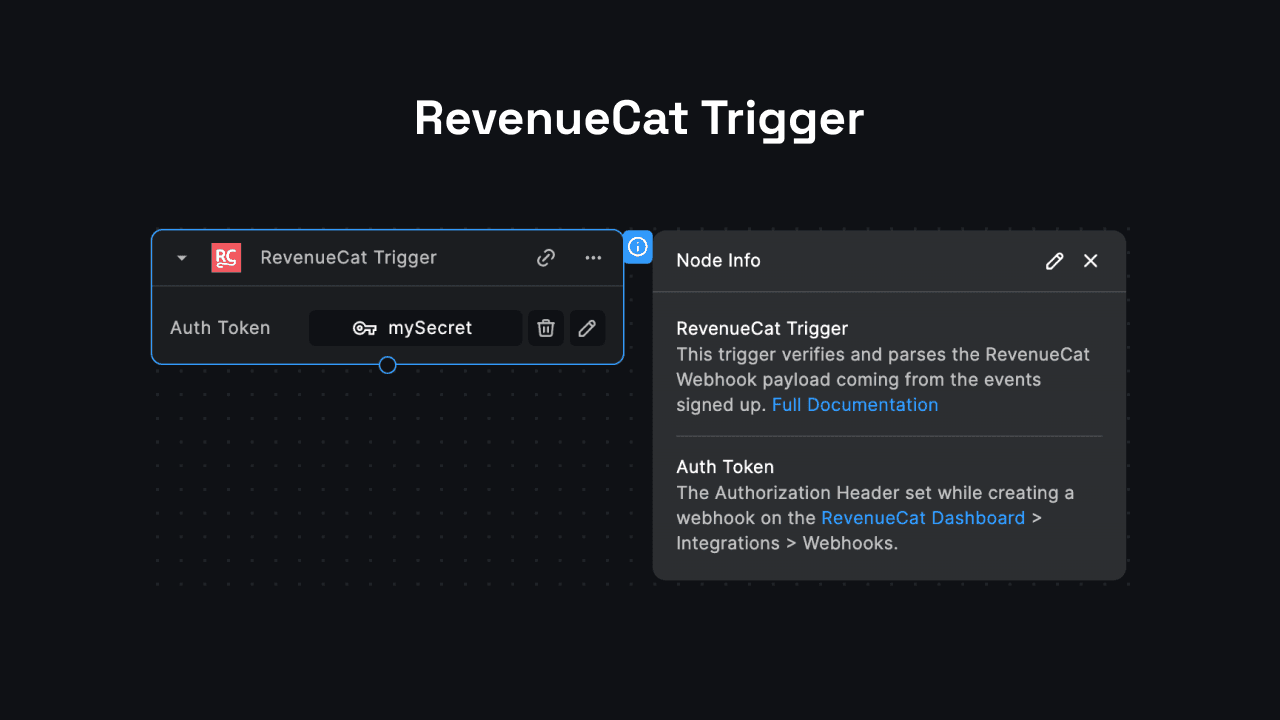
With this trigger, you can easily integrate RevenueCat's clean, normalized subscription data into your BuildShip workflows, enabling you to automate processes and build custom workflows every time there are changes to subscriptions, and purchases.
Prerequisites ✅
Before setting up the RevenueCat Trigger, you'll need:
- A RevenueCat Account. You can sign up for a RevenueCat account here (opens in a new tab).
Setting up the RevenueCat Trigger
Add the RevenueCat Trigger
-
Create a new workflow, click on "Add Trigger" button to open the Trigger Explorer. Pick the RevenueCat Trigger from the list of available triggers.
-
Click on Add to add it to your workflow.
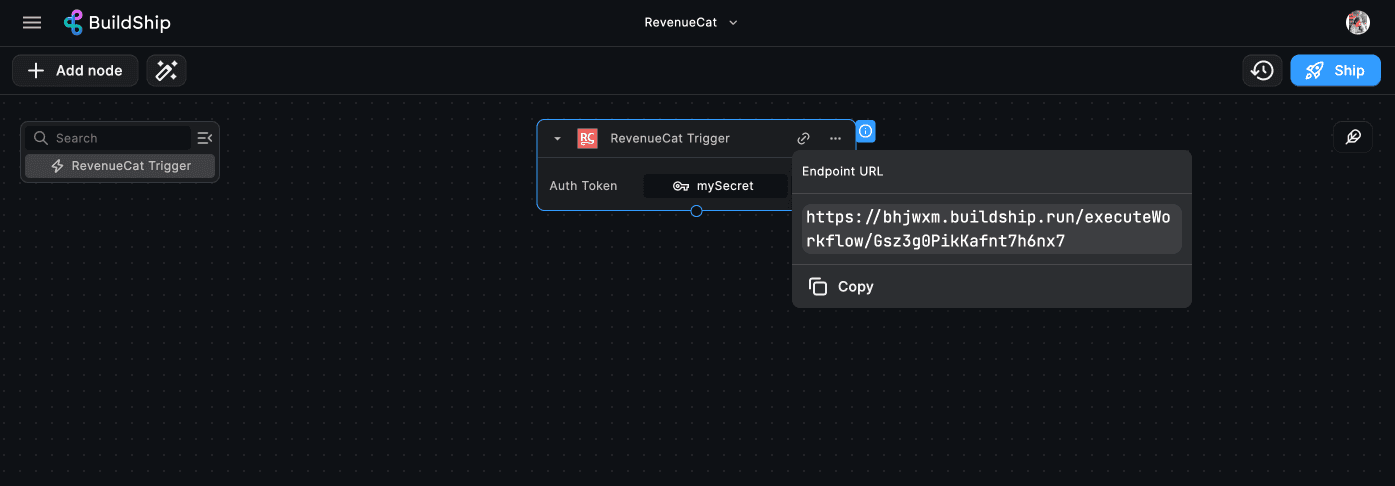
Set up the RevenueCat Webhook
-
Navigate to Projects and click on your current project. Under Integrations, click on Add Integration.
-
Under RevenueCat core tools > Click on Webhooks and create a new Webhook.
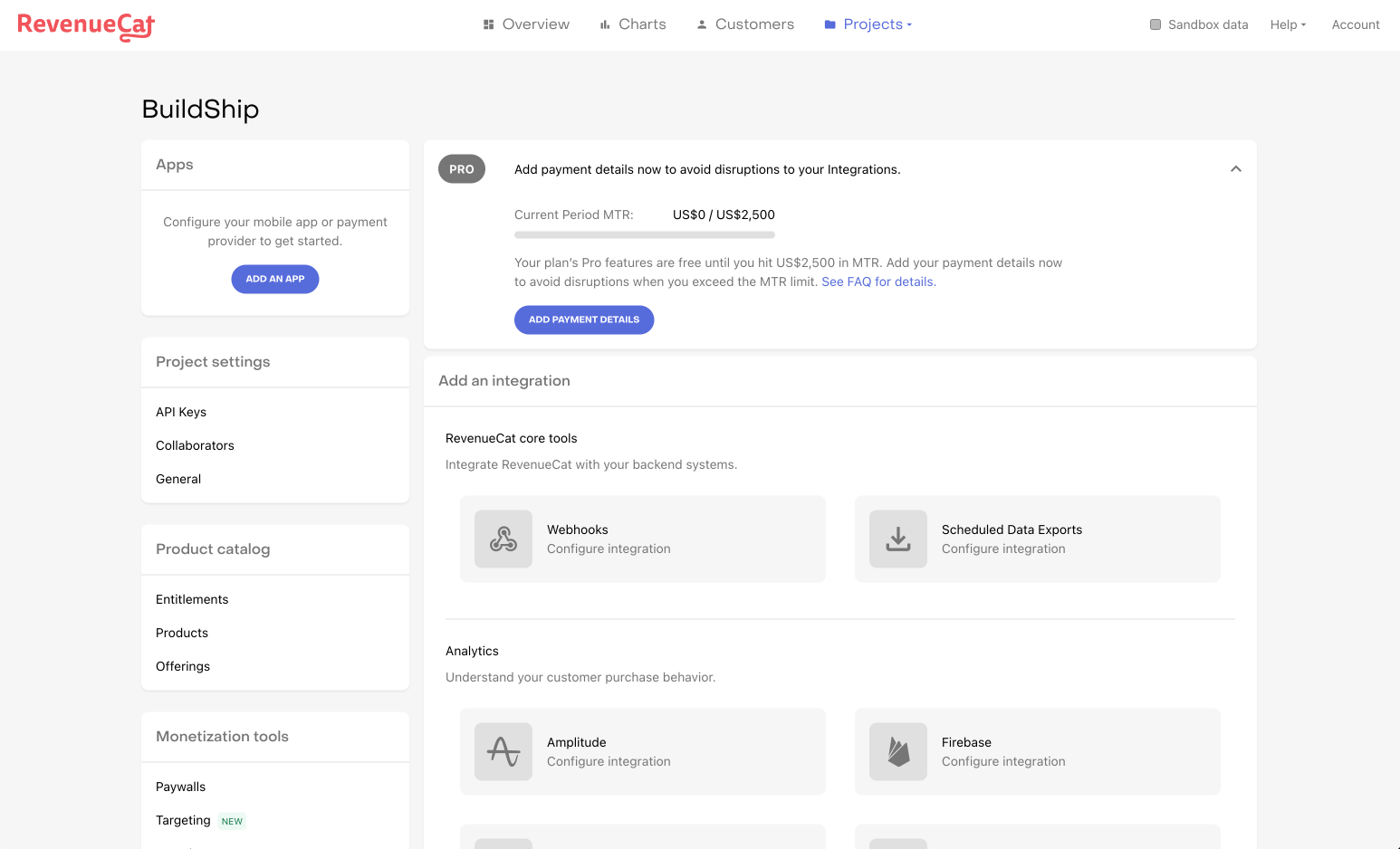
Configure the Webhook
-
Add a Webhook Name - any name to identify the webhook.
-
Add the Webhook URL - the URL generated by the RevenueCat Trigger in BuildShip.
💡To get the Webhook URL, go to the RevenueCat Trigger in your BuildShip workflow and click on the URL icon to copy the Endpoint URL.
-
Set the Authorization Header Value (optional) - To enable verification for the webhook requests, add a secret value to match in the RevenueCat Trigger Auth Token. If no value is set, the webhook will be sent without any authorization. (Refer to the Trigger Inputs section for more information)
-
Choose the environment to trigger the webhook - Sandbox or Production.
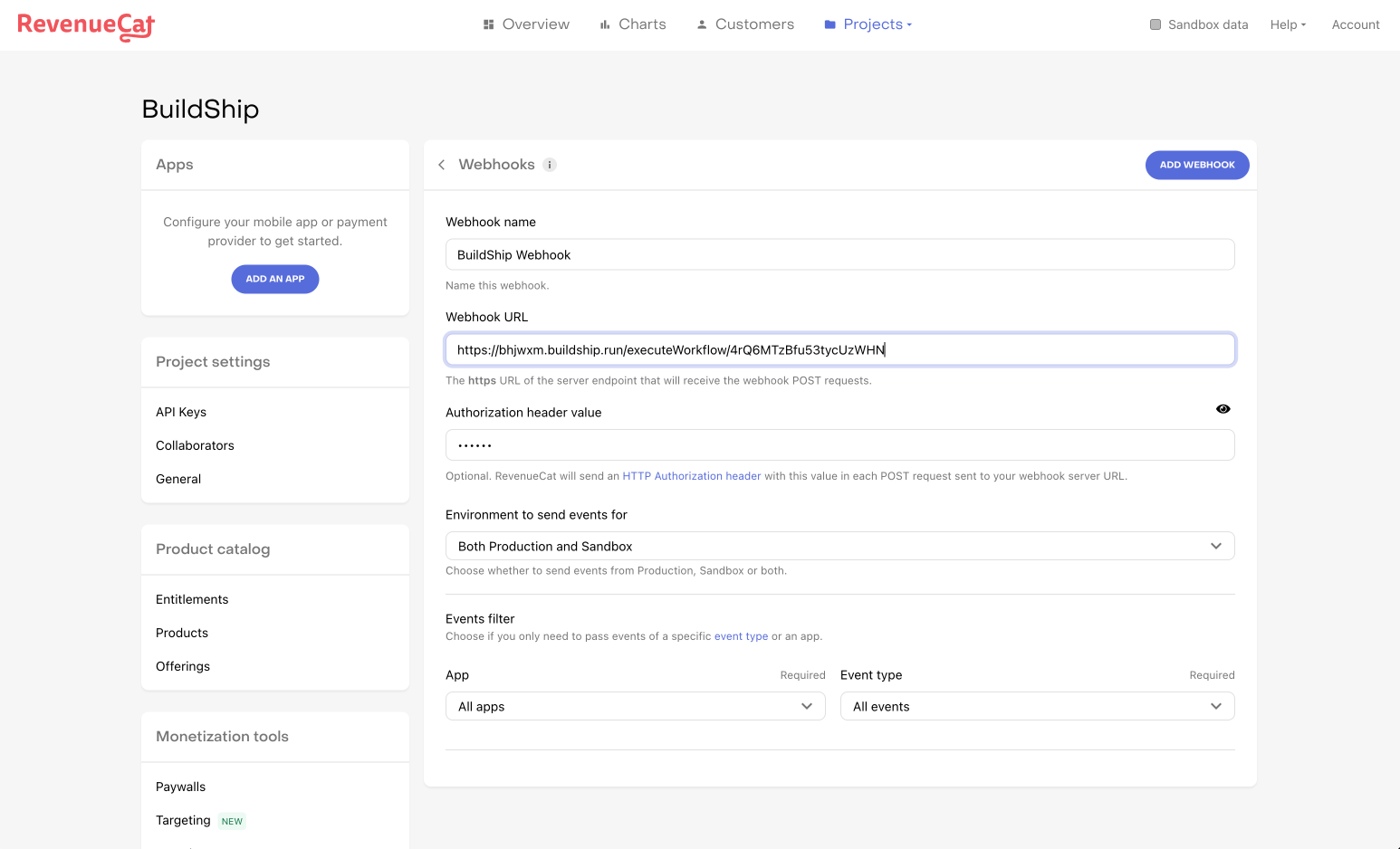
Select Events
Choose the events you want to trigger the webhook for. You can choose to trigger the webhook for all events or individually select from the following:
- Initial purchase - A new subscription has been purchased, or a lapsed user has resubscribed.
- Renewal - An existing subscription has been renewed.
- Product change - A customer has changed the product of their subscription.
- Cancellation - A subscription or non-renewing purchase has been canceled.
- Billing issue - There has been a problem trying to charge the subscriber.
- Non-renewing purchase - A customer has made a purchase that will not auto-renew.
- Uncancellation - A non-expired canceled subscription has been re-enabled.
- Transfer - A transfer of transactions and entitlements was initiated between one App User ID(s) to another.
- Subscription paused - The subscription has been set to be paused at the end of the period.
- Expiration - A subscription has expired.
- Subscription extended - A subscription has been extended.
- Invoice issuance - An invoice has been issued.
- Temporary entitlement grant - An entitlement has been granted temporarily to a customer.
Trigger Inputs
The RevenueCat Trigger requires the following input parameters to be configured:
Auth Token
The Auth Token is an optional secret value that can be set in the RevenueCat Webhook configuration to verify the authenticity of the incoming requests. If you set an Auth Token in the RevenueCat Webhook, you need to provide the same value in the Auth Token field of the RevenueCat Trigger in BuildShip.
Usage
Once the RevenueCat Trigger is set up and configured, it will verify and parse the Webhook payload coming from the events you've signed up for. The trigger will return the following output:
request: An object containing the query, headers, and body of the incoming webhook request.output: The parsed payload from the RevenueCat webhook request body.
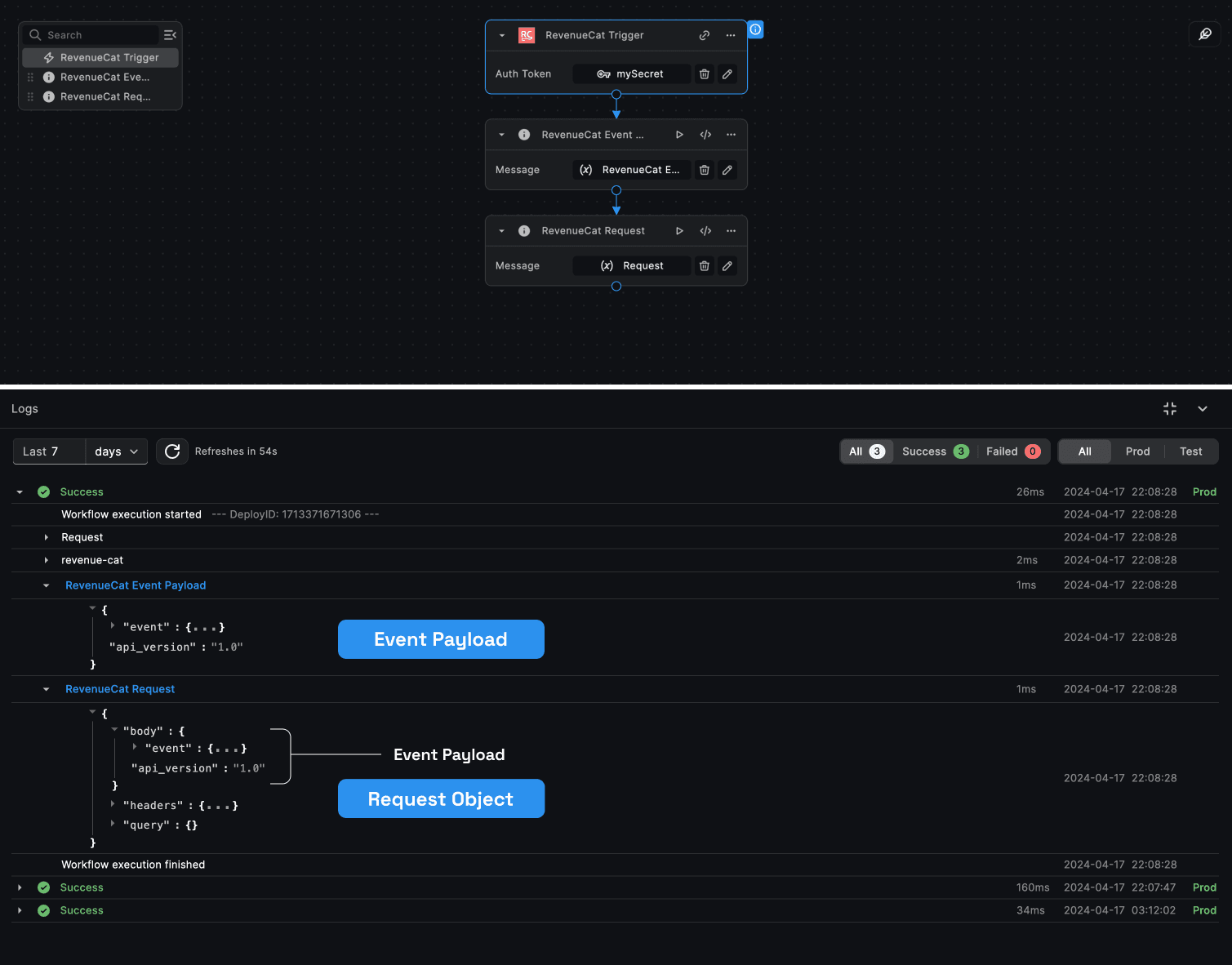
You can use this output to further process the RevenueCat webhook data in your BuildShip workflow, enabling you to build custom automations and integrations based on subscription events.
It can be used to automate workflows based on the events triggered by RevenueCat. For example, you can create a workflow that sends an email notification to the customer when their subscription is about to expire, or update a database with the latest subscription data whenever a renewal event is triggered.
Need Help?
- 💬Join BuildShip Community
An active and large community of no-code / low-code builders. Ask questions, share feedback, showcase your project and connect with other BuildShip enthusiasts.
- 🙋Hire a BuildShip Expert
Need personalized help to build your product fast? Browse and hire from a range of independent freelancers, agencies and builders - all well versed with BuildShip.
- 🛟Send a Support Request
Got a specific question on your workflows / project or want to report a bug? Send a us a request using the "Support" button directly from your BuildShip Dashboard.
- ⭐️Feature Request
Something missing in BuildShip for you? Share on the #FeatureRequest channel on Discord. Also browse and cast your votes on other feature requests.